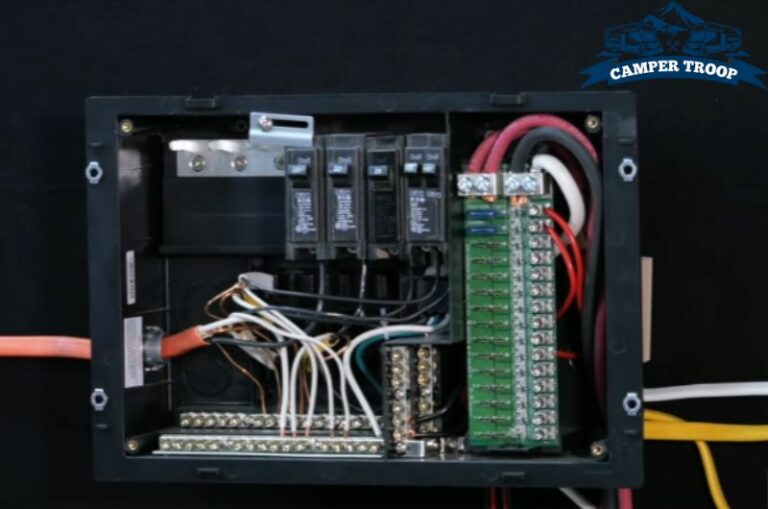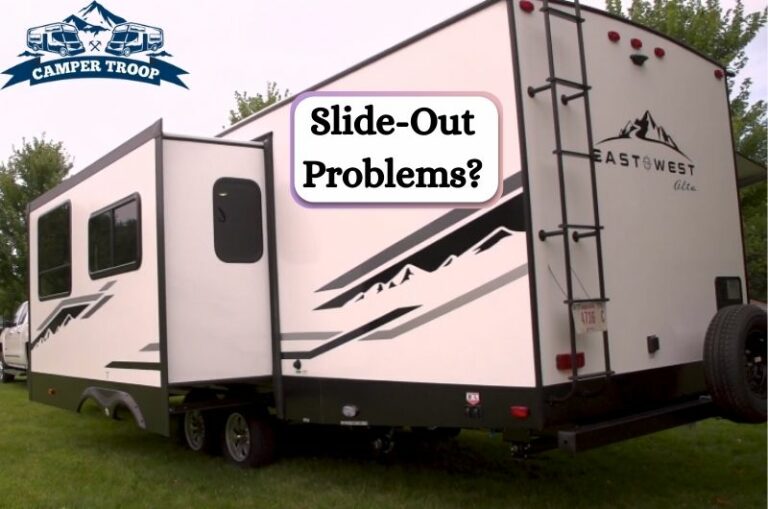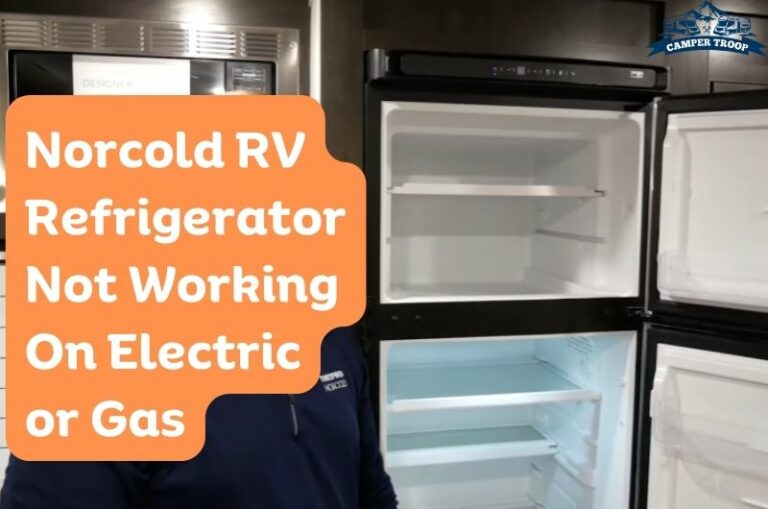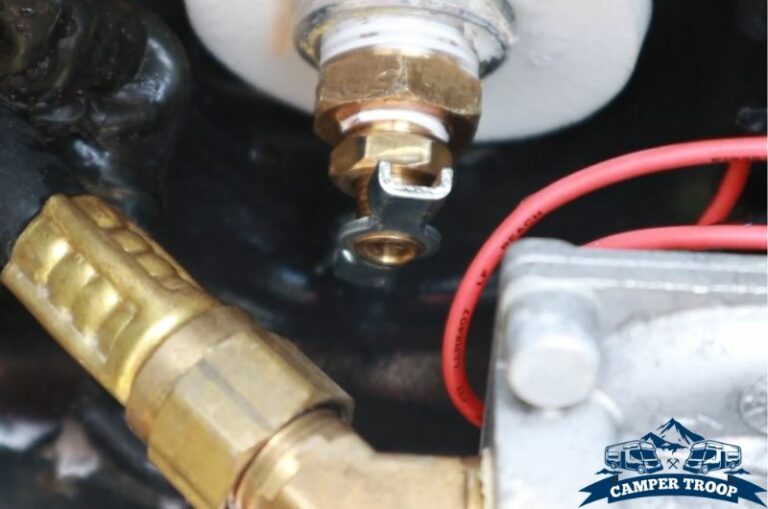Why is My Dometic RV Refrigerator Fins Freezing? (Solutions)
Dometic RV refrigerators, on recreational vehicles, are one of those appliances that can last a long time. But that doesn’t mean they couldn’t cause any issues. There are several issues that may come with a Dometic RV refrigerator.
Among them, Dometic RV refrigerator fins freezing can arise anytime and freeze or freeze your food unexpectedly. This problem usually occurs when the thermistor is faulty or there’s a wrong temperature setting.
However, you can solve this issue by troubleshooting and analyzing the possible causes listed below. So, keep reading the rest of the article.
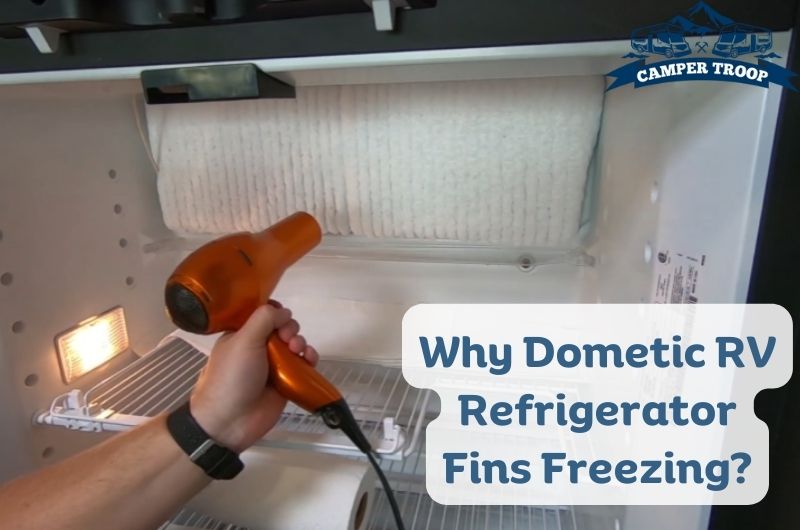
Why is My Dometic RV Refrigerator Fins Freezing?
The fins of the evaporator and condenser on a Dometic refrigerator are important for the proper heat transfer process.
But sometimes they can be frozen or problematic due to other reasons in addition to what we mentioned earlier. Let’s check them out below:
- Faulty temperature setting
- Door seal and gasket issues
- Poor air circulation
- Warm or humid air entering inside the refrigerator
- Defrosting issues
- Defective thermostat
- Low ambient temperatures
Read Also: Dometic RV Refrigerator Reset: 4 Steps to Get It Done!
How to Troubleshoot and Fix a Dometic RV Refrigerator Fin Freezing?
Fins freezing is one of the most common problems associated with Dometic RV refrigerators. But it is enough to destroy your whole journey in your RV.
So, before it messes up your journey more, here are some possible fixes along with potential troubleshooting steps. Hopefully, it will keep you on your way.
To troubleshoot and fix Dometic RV refrigerator fins freezing, follow these steps:
#1- Check the Temperature Setting
Overly low temperature settings inside your Dometic refrigerator can cause the fins to freeze. If the refrigerator is set at a temperature that is too cold, it can result in the freezing of the cooling fins.
The ideal temperature setting for a Dometic RV refrigerator is between 40 and 42 degrees Fahrenheit. And it should not be less than 32 degrees Fahrenheit.
So, check the temperature setting and adjust it to a slightly higher setting if it is low. Then, see if the freezing issue presses.
To adjust the temperature, there’s a small lever on the top right corner of the refrigerator.
You just need to move it up or down to a higher or lower temperature. But using the thermostat to set the temperature may work better than this.
Read Also: Dometic RV Refrigerator Not Cooling But Freezer Is: Fix Now!
#2- Clean the Condenser Coil
Insufficient airflow inside the refrigerator or blocked condenser coils or vents can impede proper cooling, leading to freezing the fins.
Over time, the vents or condenser coil on your Dometic refrigerator can become clogged due to excessive dirt, refrigerant leaks, plant matter, molds, or insects.
So, monitor and make sure if there are any obstructions blocking the vents or if the condenser fan is working. If you see that the coil is clogged, it will need to be cleaned ASAP.
There are a few tools you can choose from to clean the condenser coil on your Dometic, including:
- Vacuum cleaner
- Long-handed brush
- Condenser coil cleaning kit
- Baby wipes
The combination of a vacuum cleaner and a brush (use them alternately) will work best for the purpose.
Note: Ensure that your RV refrigerator is not packed too tightly with food items, as it may restrict airflow.
Read Also: Dometic RV Fridge Not Working On Electric? Causes & Fixes
#3- Inspect the Door Seals
If the door seals on your RV refrigerator are damaged or not properly sealed, warm air from the outside will enter the refrigerator, resulting in the fins freezing.
So, check the door seals for any signs of damage or gaps that could be causing cold air to leak out and warm air to get in. If the seals are worn or torn, replace them as needed.
Dollar bill test will be the best method to check if there is any gap in the door seals. On Dometic RV refrigerators, a $20 bill will work best.
#4- Check the Thermostat
If the thermostat on your Dometic RV refrigerator is malfunctioning or broken, it may be causing the refrigerator to run continuously, leading to freezing, including the fins.
The thermostat can be faulty for multiple reasons, such as:
- Dirts or debris
- Sludge
- Faulty installation
- Refrigerant leaks
- Age
So, check the thermostat, if the above solutions don’t work to fix the problem. Test the thermostat using a multimeter. If there’s no continuity, it will require a replacement.
Read Also: What Causes Dometic Fridge Check Light On: Hot To Fix it?
#5- Verify the Defrost System Functionality
One of the most common reasons for freezing fins is a faulty defrost system. Therefore, this would be the most difficult problem to deal with for a Dometic RV refrigerator.
When the defrost system doesn’t work correctly, excessive frost buildup can occur on the evaporator fins, leading to freezing.
But there’s no single reason behind a bad defrost system. It can fail due to three different causes.
- Faulty defrost timer
- Defective defrost heater
- Malfunctioning thermostat
So, verify the defrost timer, heater, and thermostat for proper operation and replace any flawed components.
#6- Reset the Refrigerator
Sometimes, a simple reset can fix many functioning issues on your RV refrigerator. So, reset your Dometic refrigerator, if the above solutions didn’t work. To reset your refrigerator:
- Remove food from the refrigerator.
- Disconnect the power source.
- Unplug the refrigerator from the outlet.
- Wait 30-60 seconds.
- Now reconnect the power source and electrical sources to the refrigerator.
Once you reset your refrigerator, check to see if the fins are still frosting. If it is, then consult a professional RV technician for further diagnosis and repair.
Read Also: 7 Common Residential RV Refrigerator Problems [Solved]
What to Do to Prevent the Fins From Freezing On a Dometic RV Refrigerator?
As the proverb goes, “Prevention is better than cure, and regular maintenance can protect the fins on your Dometic RV refrigerator from freezing.
Here are some simple tips you can follow to prevent the fins from freezing:
- Check the temperature setting regularly and adjust it if necessary.
- Make sure you close the door properly every time you open it.
- Make sure the seals and gaskets are not damaged.
- Don’t pack your RV refrigerator too full.
- Clean the vents and coils regularly and ensure proper ventilation.
- Use RV refrigerator fans for better air circulation.
- Make sure you defrost the refrigerator regularly.
- Don’t open the door too frequently, and also, avoid keeping the door open for a long time.
Read Also: Dometic RV Refrigerator Reset: 4 Steps to Get It Done!
FAQs
Now that we know why a Dometic RV refrigerator freezes, we’ve compiled some frequently asked questions to explore more about the topic. Let’s check these questions and answers out.
How long does a Dometic RV refrigerator take to cool?
Dometic RV refrigerators generally take 4-8 hours to cool down. But it could take 24 hours for a Dometic refrigerator to cool down to the set temperature.
What is the purpose of the fins on my RV refrigerator?
The fins on an RV refrigerator help to absorb heat from the air inside the refrigerator and let the indoor air cool. In this way, the fins increase the cooling capacity and efficiency of the refrigerator.
How often do I need to defrost my Dometic refrigerator?
Normally, an RV refrigerator should be defrosted every 4-8 weeks. In other words, you will need to defrost your Dometic refrigerator when the frost on the fins is roughly 3 mm (0.118 inches) thick or greater.
Conclusion
The reason for a Dometic RV refrigerator finding freezing can be one or more of the causes mentioned earlier. By checking them carefully, you will be able to find the main culprit easily.
But if you still fail to find the solution by following the above solutions, there might be a mechanical issue. So, it is probably time to schedule professional help.
Read Also: RV Refrigerators Not Cooling In Hot Weather – How To Fix?

Zayan is an accomplished author and a go-to expert for all things RV and camper-related. With a passion for adventure and a knack for problem-solving, he has spent years exploring the open road and fine-tuning his knowledge of recreational vehicles.
Zayan’s writing is a testament to his expertise, offering readers practical solutions to common RV dilemmas. Whether it’s troubleshooting mechanical issues, optimizing space, or planning the perfect road trip, Zayan’s insightful advice and engaging storytelling make him an invaluable resource for both seasoned travelers and newcomers to the world of RVing.


